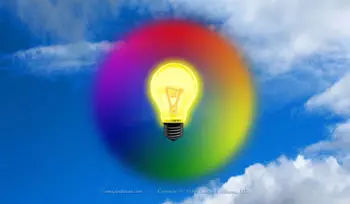Maximizing The Business Relationship Between Innovation And Creativity
- Making Group Brainstorming More Effective And Innovative
- Linking Disruptive Innovations and Disruptive Personalities
- How Work Pressure and Fear Affect Innovation
- Creative Innovation (Pt 4): Spontaneity & Frequency
- Creative Innovation (Pt 5): Employees Running into Each Other
- Creative Innovation (Pt 6): People Mix
- Creative Innovation (Pt 7): Conflict
- Creative Innovation (Pt 8): Guidelines over Rules
- Creative Innovation (Pt 9): Pessimism’s Positivity
- Creative Innovation (Pt 10): Information & Interruptions
- Creative Innovation (Pt 11): Quantification Restricts Creativity
- Creative Innovation (Pt 12): Associative Thinking
- Creative Innovation (Pt 13): Overcoming Biases
- Creative Innovation (Pt 14): Time Alone
- Creative Innovation (Pt 15): Prototypes as Obstacles
- Difference Between Innovation And Creativity In Business
- Maximizing The Business Relationship Between Innovation And Creativity
- Experts As Biggest Obstacle To Innovation, New Thinking
Business people often misunderstand the relationship between innovation and creativity. Yet, the relationship is a close one. Thus, maximizing the relationship is critical to firms seeking to break new ground.
Misconceptions About Innovation And Creativity
Misconceptions around the relationship between innovation and creativity stem mainly from applying the same filter to each. For instance, it’s not uncommon for process and innovation professionals to apply their same standards to creativity that they do to innovation.
This filter makes creativity seem a waste. It’s real when we hear innovation makes money. Creativity does not. This divorces the relationship. So, we don’t maximize either.
The Relationship Between Innovation and Creativity
The relationship between innovation and creativity is complementary. It’s the same as between macroeconomics and micro. It’s the same as a dance routine and dance moves.
As such innovation can’t exist without creativity. How can a dance routine exist without dance moves? It takes creativity to apply a general process to a specific situation. Otherwise, innovation is mechanical. It’s one-size-fits all. That’s innovation?
The innovation process is more like an operational one. The creativity process is more like a psychological one. It’s like computer processes versus people ones. To professionals in the former the latter are chaotic. That’s why I find “method” a better term for them when talking about creativity.
Maximizing The Relationship Between Innovation And Creativity

Maximizing the innovation-creativity relationship means permitting creativity to inject itself into every aspect of the innovation process to avoid its mechanical application.
Maximizing the relationship between innovation and creativity means using innovation to make creative ideas real. Yet, this is not always possible. It can’t scale. It’s too unique. The innovation process is a way to answer these.
It means using creativity to make innovation disruptive not just incremental. Creativity occurs on the individual and team levels. So, focus there. Since innovation scales ideas, it’s organizing on an enterprise level. All aspects of the business come into play.
Still, this does not mean creativity does not make money. It can. It does. For example, a creative approach might help a specific employee and make money for the company. Yet, it might be too personal and unique to scale. Compare this to a new tool. It might apply to others. It spawns innovation.
Thus, maximizing the relationship between innovation and creativity, means looking at creativity as something that occurs on the atomic level of innovation. It’s about the individual. This might be an idea. This might be a problem-solving technique.
It means looking at innovation as a way to organize these creative “atoms.” That could mean taking a creative idea and scaling it. It could mean seizing upon creative ways to apply an innovation process to a specific problem. Finally, it could even mean finding creative ways to sell the process to specific people so it’s accepted and works better.
In short, maximizing the relationship between innovation and creativity means integrating the two. Innovation scales creative ideas. Creativity makes innovation disruptive.


